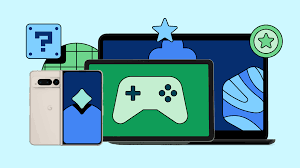Game design is a multifaceted discipline that combines creativity, technical skills, and psychology to create engaging interactive experiences. Behind every successful game lies a complex process that involves meticulous planning, collaboration, and iteration. This article delves into the art of game design, exploring the key elements, methodologies, and the collaborative nature of the process.
1. Understanding Game Design
What is Game Design?
Game design encompasses the creation of rules, mechanics, storylines, and visual elements that define how a game functions and how players interact with it. It’s not just about making a game enjoyable; it involves crafting a compelling experience that resonates with players on various levels.
Key Elements of Game Design
- Gameplay Mechanics: These are the rules and systems that dictate how players interact with the game. Mechanics can include combat systems, puzzle-solving elements, or resource management.
- Story and Narrative: A well-crafted story enhances immersion and engagement. Game designers must consider how narrative elements unfold within the gameplay and how they can motivate players.
- Visual Design: Art direction and graphics play a crucial role in shaping the game’s aesthetic and mood. Visual elements help convey themes, character designs, and environments.
- Sound Design: Audio elements, including music and sound effects, enhance the overall experience and can evoke emotions, create atmosphere, and provide feedback to players.
2. The Game Design Process
Conceptualization
The game design process often begins with brainstorming ideas and developing a concept. This stage involves defining the core gameplay mechanics, target audience, and overall vision. Designers create a game design document (GDD) that outlines the game’s premise, gameplay, narrative, and visual style.
Prototyping
Once a concept is established, designers create prototypes—simplified versions of the game to test mechanics and gameplay ideas. Prototyping allows designers to experiment and iterate quickly, identifying what works and what doesn’t before committing significant resources.
Playtesting
Playtesting is a critical phase where players interact with the prototype to provide feedback. This feedback helps identify gameplay issues, balance mechanics, and assess player enjoyment. Iteration based on playtesting is essential for refining the game.
Production
After extensive testing and iteration, the game enters the production phase, where developers, artists, and sound designers collaborate to create the final product. This stage involves programming, creating assets, and integrating all elements into a cohesive experience.
Launch and Post-Launch
Once the game is complete, it’s released to the public. However, the design process doesn’t end there. Post-launch support often includes updates, patches, and additional content based on player feedback and engagement metrics.
3. Collaboration in Game Design
Cross-Disciplinary Teams
Game design is inherently collaborative, involving various disciplines such as programming, art, sound design, and marketing. Effective communication and collaboration between team members are crucial for ensuring that all aspects of the game align with the original vision.
Iterative Feedback Loops
Collaboration extends to player feedback as well. Developers often rely on community input to inform updates and expansions. This iterative feedback loop helps create a game that evolves with its audience, fostering a strong community around the title.
4. The Role of Game Designers
Types of Game Designers
- Gameplay Designers: Focus on mechanics and systems, ensuring the game is fun and balanced.
- Level Designers: Create the environments and scenarios that players navigate, focusing on pacing and challenge.
- Narrative Designers: Craft the story and dialogue, ensuring that the narrative complements the gameplay.
- Systems Designers: Work on overarching systems that govern how various gameplay elements interact.
Skills and Tools
Game designers need a diverse skill set, including creativity, analytical thinking, and an understanding of player psychology. Familiarity with game development tools and software, such as Unity or Unreal Engine, is also essential for implementing design ideas effectively.
5. The Future of Game Design
Emerging Technologies
As technology advances, new possibilities arise for game design. Virtual reality (VR), augmented reality (AR), and artificial intelligence (AI) are transforming how games are developed and played, offering immersive experiences that were previously unimaginable.
Emphasis on Diversity
The gaming industry is increasingly recognizing the importance of diverse voices in game design. This shift leads to richer narratives and more inclusive gameplay experiences that resonate with a broader audience.
Player-Centric Design
The focus on player experience continues to grow, with designers placing greater emphasis on understanding player motivations and behaviors. This player-centric approach helps create games that are not only entertaining but also emotionally impactful.
Conclusion
The art of game design is a complex and collaborative process that combines creativity, technical skills, and an understanding of human behavior. From conceptualization to production, each stage is essential in creating a compelling interactive experience. As the industry continues to evolve, game designers will play a crucial role in shaping the future of gaming, pushing boundaries, and exploring new frontiers in interactive storytelling. Whether you’re a budding designer or a passionate gamer, understanding the intricacies of game design enriches your appreciation for the artistry behind your favorite games.
